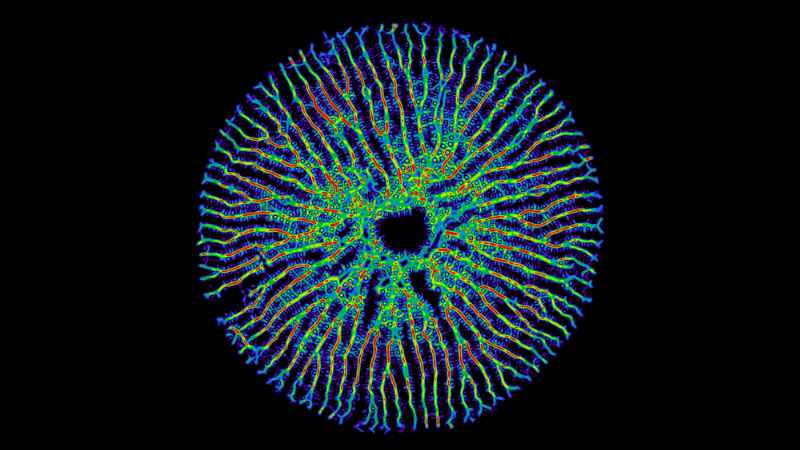The formation of minerals by living organisms is a widespread biological phenomenon. This includes bone, teeth, seashells, and also the cell walls of tiny microalgae, called diatoms, which are key contributors to global photosynthetic CO2 fixation and oxygen production. Yet, little is known about the physical mechanisms that shape their architecture, which often combines features on many different scales. Diatoms are unicellular algae found in all aquatic habitats, and produce intricately patterned cell walls made predominantly of amorphous silica (SiO2). However, the principles governing the formation of their silica patterns are still largely unknown.
Combining theory and experiments on the model diatom Thalassiosira pseudonana, Babenko et al. have proposed a new minimal model based on reaction-diffusion systems in a growing morphogenesis compartment. This model can explain how silica rib patterns, a pervasive feature of diatom cell walls, form. This model is in quantitative agreement with electron microscopy data and compatible with known silica biochemistry. Unlike classical Turing mechanisms, which predict pattern formation to start instantaneously across the entire system, the proposed mechanism relies on a self-replicating reaction-diffusion system initiated by a single seed, with pattern formation propagating radially outwards.
The intricate biomineral patterns developed by microorganisms (such as diatoms) are still inaccessible to material scientists today. The generic mechanism of branching morphogenesis identified here could provide future recipes for bottom–up synthesis (for example, of mineral–nanowire networks for technological applications). Not only this, but similar mechanisms may apply in the morphogenesis of other biological systems. Corals, or bacterial biofilms, both contain branched structures, and may also follow similar rules in pattern formation. Overall, the proposed model may pave the way to innovative approaches in material synthesis, and branching morphogenesis studies.
